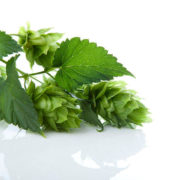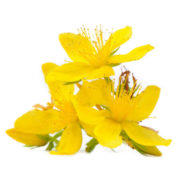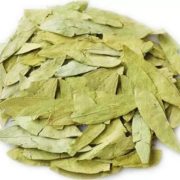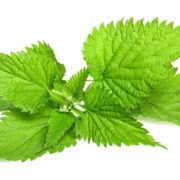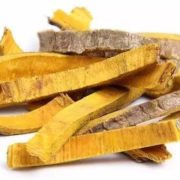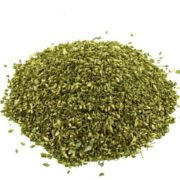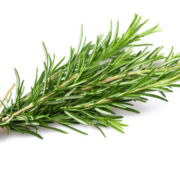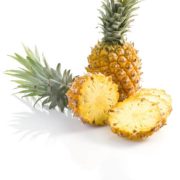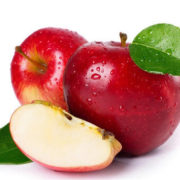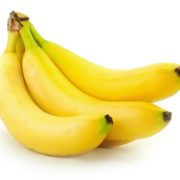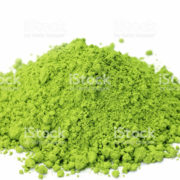Griffonia Seed Extract(5-HTP)
The main chemical component of Ghanaian seed extract is 5-Hydroxytrophan (5-HTP), which is a natural amino acid extracted from the dried seeds of the mesquite plant Griffonia Simplicifolia. Name 5-hydroxy-3-indolyl-α-aminopropionic acid. It is safer to use than synthetic 5-hydroxytryptophan. People with lower levels of 5-hydroxytryptamine (5-HT) are more prone to depression, impulsivity, and even aggressive behavior. 5-hydroxytryptophan can be converted to 5-HT by decarboxylation in the body, which can help the body to increase 5-HT levels. Is an important neurological drug. Modern research has found that 5-hydroxytryptophan has the physiological effects of antidepressant, central analgesia, hypnosis, anti-stress, and regulation of endocrine.
Basic Information
1.Material Distribution
Ghana seeds are dried seeds of the mesquite plant Ghana grain Griffoniasimplicifolia, native to West African countries such as Ghana, Côte d’Ivoire and Togo. Ghanaian seed plants can generally grow to 2 to 3 m in height, and the branches are brownish and smooth; in the secondary forest areas, some climb on tall trees. Flowering from August to October, the flowers (androgynous) are light green, and the results from December to February. The pods generally have 1 to 4 seeds, and the mature seeds are oblong, about 1.5 cm long and about 1 cm wide. The seed coat is black, wrinkled, and the endosper is yellow-green with a slight bean flavor. Since ancient times, folk medicine in West Africa has used the leaves of Ghanaian seeds to restore wounds. Its leaf mash juice is a good medicine for treating urinary tract disorders and kidney diseases. Ghana seeds have the effects of treating pelvic congestion, diarrhea, nausea and vomiting, stomach pain and so on. In addition to antibiotic properties, it is also well-known for improving human sexual function; minced bark can be used not only as a cream to treat soft diarrhea, but also as a preservative.
2.Main Ingredients
Ghana seed extract contains macromolecules such as polysaccharides, proteins, oils and fats. The ultrafiltration membrane can selectively remove macromolecular impurities and retain small molecules of 5-hydroxytryptophan.
· 5-HTP
The most representative active substance in Ghana seed extract is a kind of natural aromatic amino acid with molecular formula C11H12N2O3, which is an important direct precursor substance for inhibiting neurotransmitter complex amine (5-HT). It is also melatonin (Mel). A substance that regulates biosynthesis and has significant antidepressant, anti-obesity, and chronic headaches.
· Lectin
Another chemical component of higher interest is lectin, a non-immune source, a reversible and uniquely recognized protein molecule for sugars and their conjugates, which is widely found in nature. Ghana seed agglutinin is divided into GS-I, GS-II, GS-III, and GS-IV. The most studied ones are GS-I and GS-II. At present, the separation and purification of lectin is mainly achieved by affinity chromatography column, such as Lamb, etc. using biogel P-300 affinity chromatography column and p-anilino-1-indenyl-N-acetyl-β-D-amino group A glucoside agarose gel was eluted with a phosphate buffer containing a methyl α-D-galactose residue and an N-acetylglucose residue, respectively, to obtain GS-I and GS-II. GS-I contains five lectins A4, A3B1, A2B2, A1B3, and B4, and its polypeptide chain contains 6.7% sugars, including mannose, glucosamine, trehalose, and xylose.
· Unsaturated Fatty Acid
The unsaturated fatty acid has an oil content of between 15% and 20%, and is mostly present in the form of triacylglycerol. The content of unsaturated fatty acids is above 85%, and the content of linoleic acid and linolenic acid is 70% to 75%. Ren Jie et al. used the Ghana seed residue extracted from 5-HTP as raw material to determine the optimal extraction process parameters of Ghana seed fatty acid: 20 g of Ghana seed powder with a pulverization degree of 10 mesh and a water content of 10.7%, with 6# solvent oil. It is a leaching agent, the temperature is 70 ° C, the leaching time is 3 h, and the ratio of material to liquid is 1:12 (g/mL). Through the verification experiment, the extraction rate of oil in Ghana seeds reached 19.78%. Petkov et al. used urea encapsulation to remove saturated fatty acids from fats and oils, resulting in 95% linoleic acid (18:2) and 4% oleic acid (18:1) in the remaining mixture.Compared with other plants, although the linoleic acid content of Ghana seeds is not high, but because its oleic acid content is relatively low, it makes linoleic acid easier to enrich, so Ghana seeds can be used as a linoleic acid. A reliable source. The oil content is between 15% and 20%, and is mostly in the form of triacylglycerol. The content of unsaturated fatty acids is above 85%, and the content of linoleic acid and linolenic acid is 70% to 75%. Ren Jie et al [32] determined the optimum extraction process parameters of Ghana seed fatty acid by extracting 5-HTP Ghana seed residue: 20 g of Ghana seed powder with a crushing degree of 10 mesh and a water content of 10.7%. #Solvent oil is the leaching agent, the temperature is 70 °C, the leaching time is 3 h, and the ratio of material to liquid is 1:12 (g/mL). Through the verification experiment, the extraction rate of oil in Ghana seeds reached 19.78%. Petkov et al. used urea encapsulation to remove saturated fatty acids from fats and oils, resulting in 95% linoleic acid (18:2) and 4% oleic acid (18:1) in the remaining mixture. Compared with other plants, although the linoleic acid content of Ghana seeds is not high, but because its oleic acid content is relatively low, it makes linoleic acid easier to enrich, so Ghana seeds can be used as a linoleic acid. A reliable source.
· Other Substances
In addition to the above three active substances, the Ghana seed extract also contains phytosterols (in which the vegetable oil sterol, stigmasterol, β-sitosterol content is 11%, 29%, 60%, in turn, steroids, alkaloids, saponins) A variety of active substances, the potential application value is immeasurable. Not only that, but also rich in nutrients, including various amino acids, vitamins, minerals, etc., especially magnesium, phosphorus, calcium, and zinc are extremely high.
Extraction Process
1.Hydrothermal Reflux Extraction Method
5.00 g of Ghana seed powder was taken and extracted with 50 mL of distilled water at 80 ° C for 2 h, filtered, and the filtrate was collected and made up to 50 mL with water.
2.Alcohol Hot Reflux Extraction Method
Take 5.00 g of Ghana seed powder and extract it with 50 mL of 50% ethanol solution at 80 ° C for 2 h, filter, collect the filtrate, and dilute to 50 mL with 50% ethanol solution.
3.Ultrasonic Water Extraction Method
Take 5.00 g of Ghana seed powder, ultrasonically extract with 50 mL of distilled water for 30 min, filter, collect the filtrate, and dilute to 50 mL with water.
Pharmacological Effects
1.Antidepressant effect
The experimental observation of the utilization of TRP (tryptophan) in patients with depression found that the utilization of L-TRP in patients with major depression was significantly lower than that in patients with mild depression.
2. Central analgesic effect
TRP may exert a central analgesic effect by increasing the central serotonin (5-HT) content. When the 5-HT descending fiber reaches the spinal cord, it can be mediated by interneurons to activate the enkephalin neurons in the keratin region. The latter can inhibit the peripheral pain information to the secondary level by means of presynaptic inhibition. Neurons, thus playing a central analgesic effect.
3. Cardiovascular system effects
The results of animal models of different hypertension in rats indicate that TRP also has antihypertensive activity.
4. Hypnosis
5-hydroxytryptophan can form a neurohormonal precursor serotonin by vitamin B6 in the body, thereby promoting sleep and mental stability.
5. Physiological effects of anti-stress
Studies have found that injection of 5-hydroxytryptophan can reduce the attack and killing of mice in a short period of time, the degree of reduction is proportional to the amount of 5-hydroxytryptophan injection.
6. Effects on neuroendocrine activity
5-hydroxytryptophan can be converted into certain hormones directly involved in endocrine activities, and can also be converted into the central neurotransmitter 5-hydroxytryptamine indirectly affecting the release of neurohormones.
7. Suppress appetite
5-hydroxytryptophan at a dose of 3 to 200 mg·kg-1 can cause anorexia in rats to be positively correlated with dose.













